Behaviors
living organism
biotic
A group of students made the following list of interactions in a forest ecosystem?
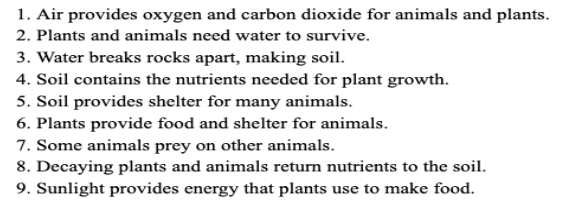 Which TWO interactions are between living things?
Which TWO interactions are between living things?
Interactions 6 and 7
Which adaptation allows these animals to survive exposure to cold water temperatures during winter?
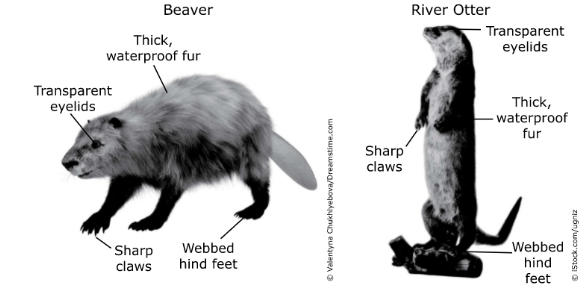
thick, waterproof fur
A partial forest food web is shown.
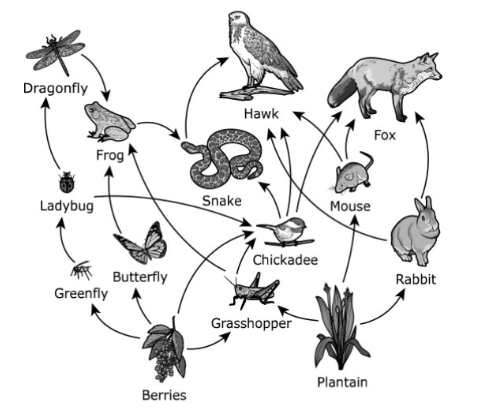
List at least 3 herbivores.
Greenfly, Butterfly, Grasshopper, Mouse, Rabbit
A behavior that organisms are born knowing how to do.
Characteristics organisms are born with.
Two Terms are Needed
Instinct
Inherited Trait
An organism that must eat other organisms to obtain energy.
Consumer
The diagram shows a cause-and-effect relationship in a pond ecosystem.
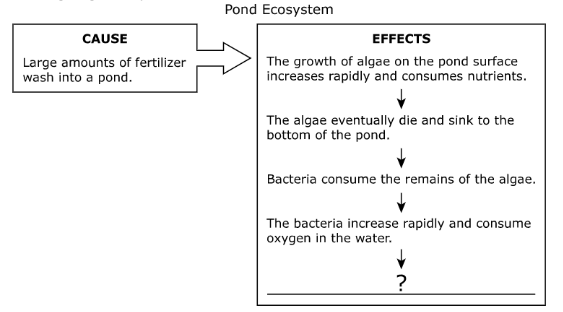
What will happen to the population of fish if large amounts of fertilizer wash into the pond?
The table lists some traits of three plants.
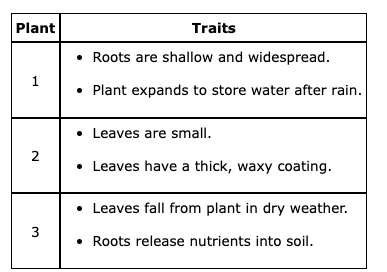
All the plants listed in the table are MOST LIKELY adapted to which environment?
Desert
Students researching the relationships between some organisms in the Lavaca Bay ecosystem in Texas made this partial food web.
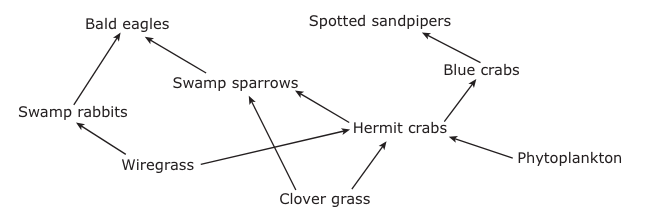
Which organisms receive at least some of their energy from producers?
Swamp rabbits, Swamp sparrows, Hermit crabs
Behaviors organisms are not born knowing how to do but acquire through observation, experience, or education.
Learned Behavior
nonliving organism
abiotic
The chart lists plants and animals interacting with parts of an environment.

Which statements describe an animal interacting with a living part of the environment?
Statements 1, 4 and 6
The tallest trees in a rainforest are removed for lumber. This increases the amount of light on the forest floor. The table shows information about fungi and ferns that grow on the forest floor.
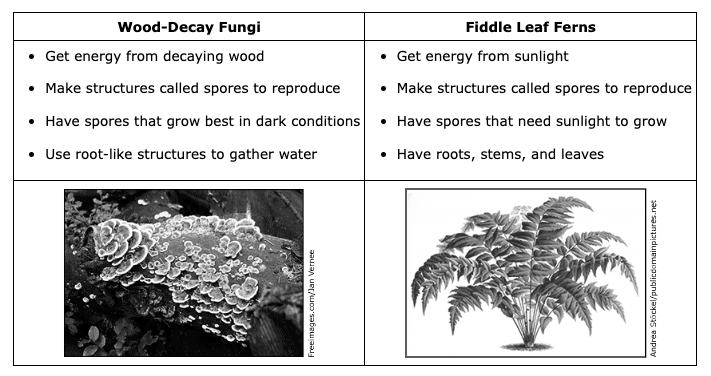
Which organism is better adapted to the removal of tall trees and why?
The fern because it gets its energy from the sun.
A partial food web is shown.
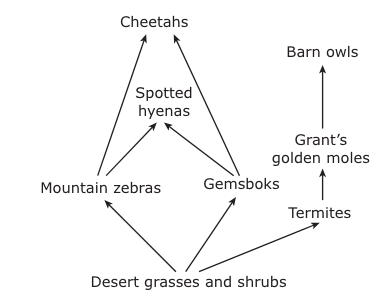
Write one complete pathway in which energy flows in this food web. (There is more than one.)
DGS - zebras - hyenas
DGS - zebras - cheetahs
DGS - gemsboks - hyenas
DGS - gemsboks - cheetahs
DGS - termites - golden moles - barn owls
Students made a chart classifying animal behaviors.
 Which animal behavior is NOT correctly classified?
Which animal behavior is NOT correctly classified?
Bear looking for food in a trash can.
An organism that must create its energy through photosynthesis.
Producer
A teacher uses an aquarium to make a habitat for a frog. A list of student observations of the frog is shown.
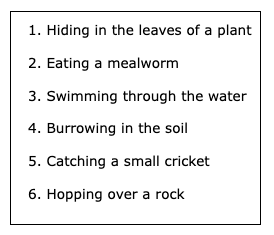
Which student observations show the frog interacting with nonliving elements of its environment?
3, 4 and 6
The life stages of two animals are shown.
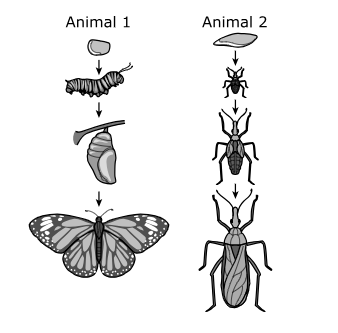 What is the difference between these two life cycles?
What is the difference between these two life cycles?
Animal 1 goes through a complete metamorphosis and Animal 2 goes through an incomplete metamorphosis.
A desert food web is shown.
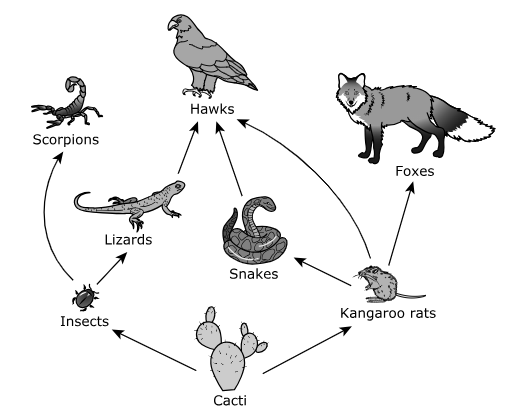
How many carnivores are represented in the desert food web?
5
A student makes a list to describe a friend. Which of the listed characteristics is a learned behavior?
Select TWO correct answers.
- brown eyes
- draws well
- has freckles
- reads daily
- has blonde hair
draws well and reads daily
Decomposer
Axis deer are an invasive species of deer found in Texas. There are about 125,000 axis deer in Texas. Axis deer eat grasses, flowering plants, and shrubs. The diet and habitat of axis deer are often the same as those of other animals native to Texas.
Based on this information, how do axis deer most likely affect Texas ecosystems?
They overgraze the land.
The table shows characteristics of two different types of birds that live in similar forest environments.
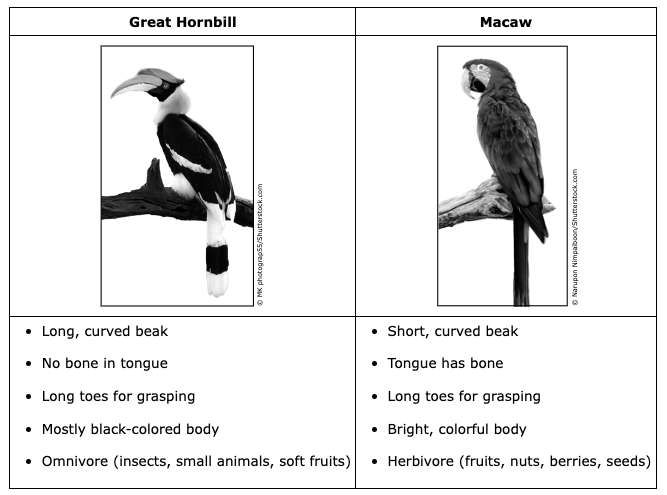
Explain an advantage of a bone in the macaw’s tongue that the hornbill does NOT need.
It helps macaws break open and eat tropical fruits and nuts.
Zoe was studying how the organisms of a swamp get their energy. She made this table from her research.
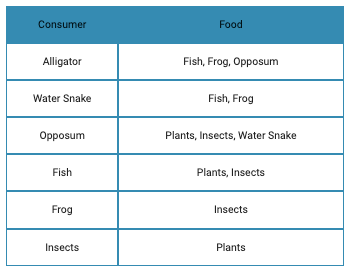 What is the original source of energy for all organisms in the swamp?
What is the original source of energy for all organisms in the swamp?
Sun
Students observe their class pet, a hampster, in its cage. They share their observations on a chart in front of the classroom. Look at the chart below.

Which of these observations is most likely a learned behavior? Select TWO correct answers.
It drinks water from the metal tube on the water bottle.
It comes to the door to get a treat.